29 Different Types of Necklaces: Your Ultimate Guide to Necklace Designs
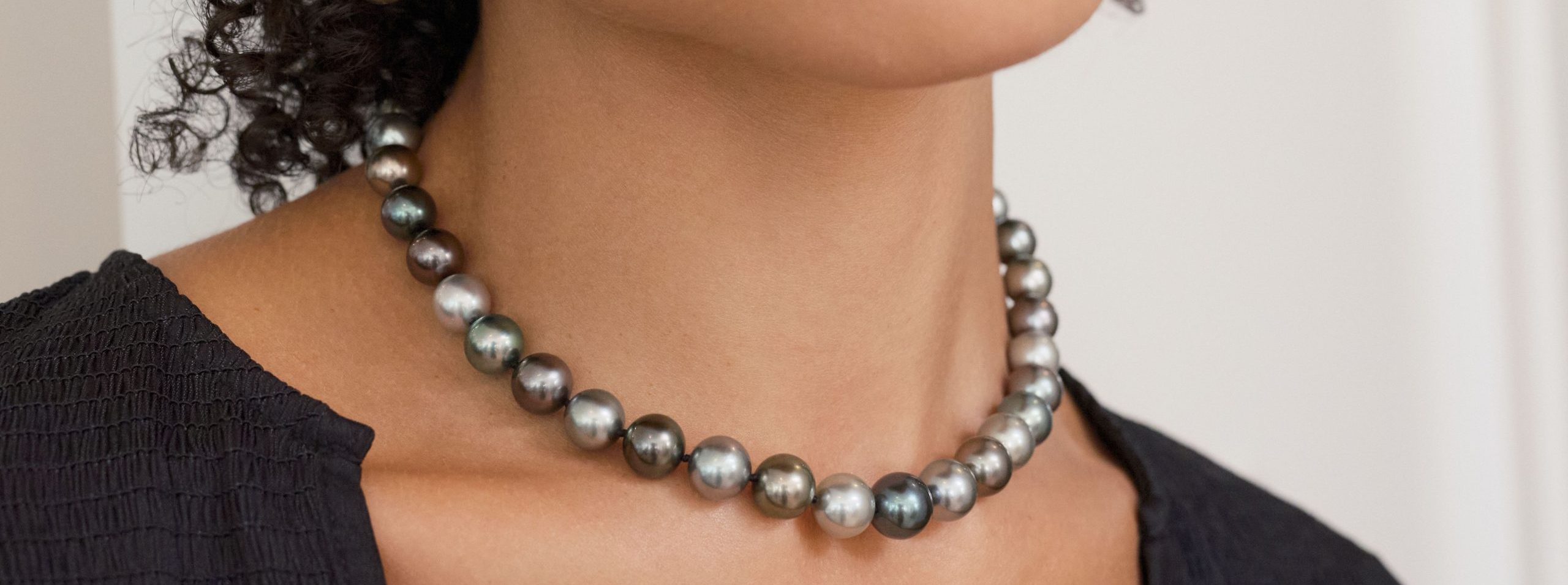

From dainty chains to opulent strands, all types of necklaces have adorned our necklines for millennia. In fact, necklaces are one of the oldest forms of jewelry. Archaeological evidence suggests that they were worn as far back as 40,000 years ago!
Necklaces come in an overwhelming range of designs, materials, lengths and styles—from edgy collars to glamorous ‘ropes of pearls’, and from Egyptian-inspired plastrons to sentimental lockets. There’s a necklace for every style, outfit, and occasion!
Below, we’re taking a deep dive into 29 different types of necklaces. We’ll look at their design, materials, lengths, history, fun facts, and any important meaning or symbolism. Read on for the ultimate guide to necklace types!
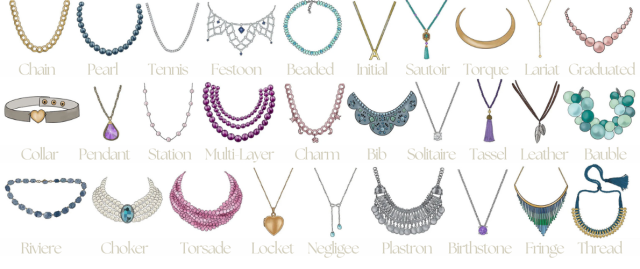
With so many different necklace styles and shapes to choose from, we’re here to help you find your new favorite. Here are some popular types of necklaces from throughout history, and today!
Chain necklaces are straightforward pieces of jewelry that feature metallic chains crafted from precious or semi-precious materials. There are various types of chains out there, including rope, curb, figaro, mesh, box and bead, and the most popular, the classic cable chain. Chain necklaces do not feature any pendants or charms and are worn either on their own or layered with other pieces. These types of chains include charm necklaces, pendants and lariat necklace designs.
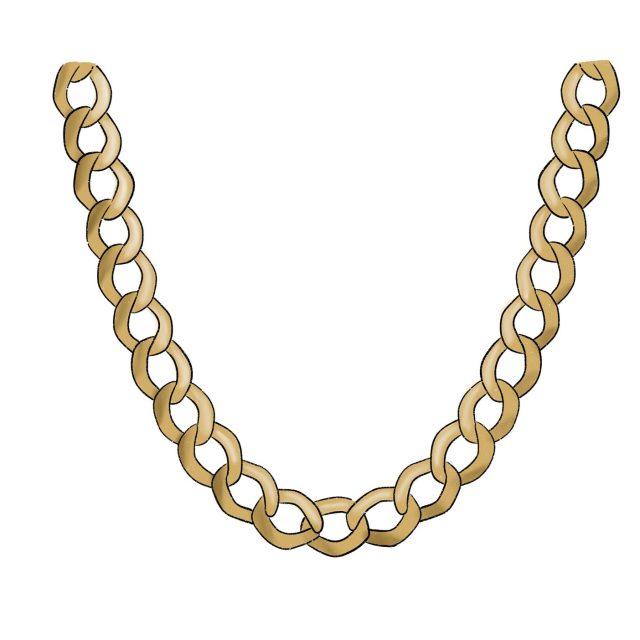
Pearl necklaces can be crafted from cultured pearls (real pearls) or faux pearls (imitation pearls made of glass, plastic, alabaster or shells). Cultured pearls can be produced both in fresh waters (Freshwater pearls) or saltwater (Tahitian, Akoya and South Sea pearls). Real pearls are valuable, so must be safely secured on silk thread, with knots in between each pearl.
A typical pearl necklace will be available at a range of necklace lengths. These include choker length (at the base of the neck), princess, matinee (sitting low on the chest), opera (close to waist-length) and the longest: rope length.
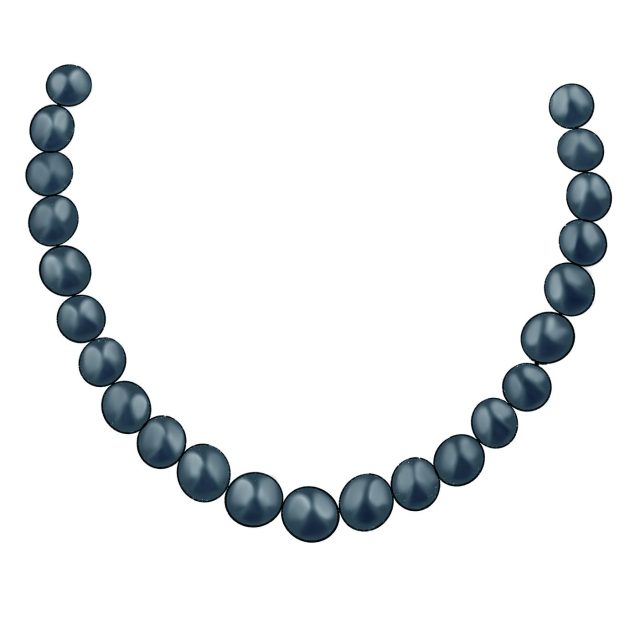
FUN FACT: According to Official Guinness Records, the longest pearl necklace was created in China in 2015 and measures 2,278.5 m (7475 ft 3 in). The necklace includes 316,474 pearls.
A tennis necklace is a classic touch of glam that features a seamless strand of diamonds around the entire neckline. Alternatives with a lower price point exist on the market as well, featuring gems like cubic zirconia. These necklaces can be fashioned with either dainty or large, statement diamond stones.
The term “tennis necklace” finds its origin in the 1987 US Open, during which renowned tennis player Chris Evert misplaced her diamond-adorned chain in the middle of the match. Evert requested a brief pause in the game to search for her valuable jewelry piece. In addition to necklaces, the term ‘tennis’ also describes types of bracelets that feature diamonds in a single row around the wrist.
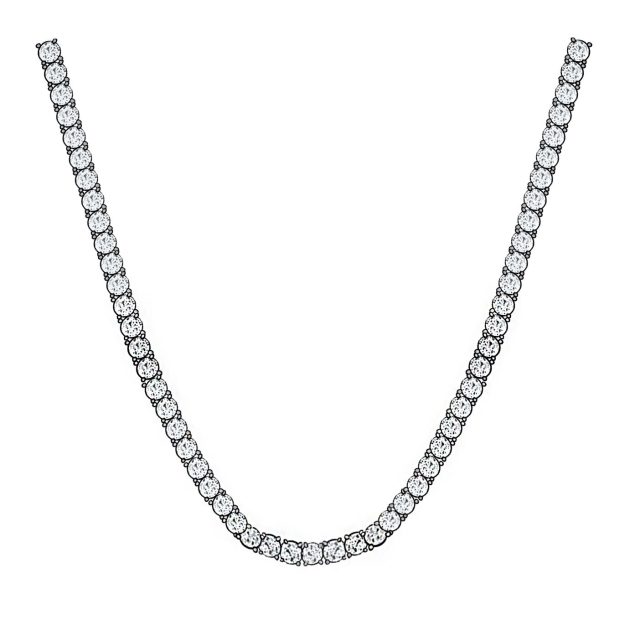
Festoons are types of necklaces that are highly ornate. They feature numerous drapes or rows of beads, metallic chains or extensions in an intricate design. Highly popular during the late 18th century and the early 19th century, festoon necklaces were often worn by royalty. The name comes from the French “festoon” and Italian “festone,” (the Late Latin “festo”), meaning ‘festive garland’ or ‘garland of flowers’, evoking the ornate style of this necklace type.
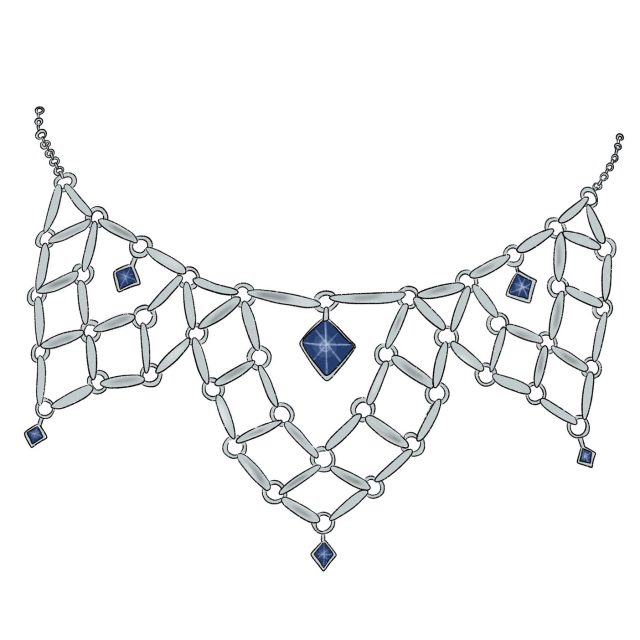
Beaded necklaces can, of course, be worn as a fashion statement, but they also hold significant importance across various cultures and religions. Mala, rosary, and subha beads are types of necklaces utilized in meditation and prayer rituals. In fact, the English term “bead” finds its roots in the Anglo-Saxon words “bede” and “bidden,” which respectively mean “prayer” and “to pray.”
Among Native Americans, beaded necklaces are integral to traditional attire and ceremonies. These pieces often incorporate symbols and colors with specific cultural meanings. Similarly, in Hawaiian culture, beaded necklaces serve as a tribute to the islands’ natural charm. They offer a connection to its rich heritage through motifs such as fish hooks, turtles, and sharks, each representing concepts like protection, strength, and good fortune.
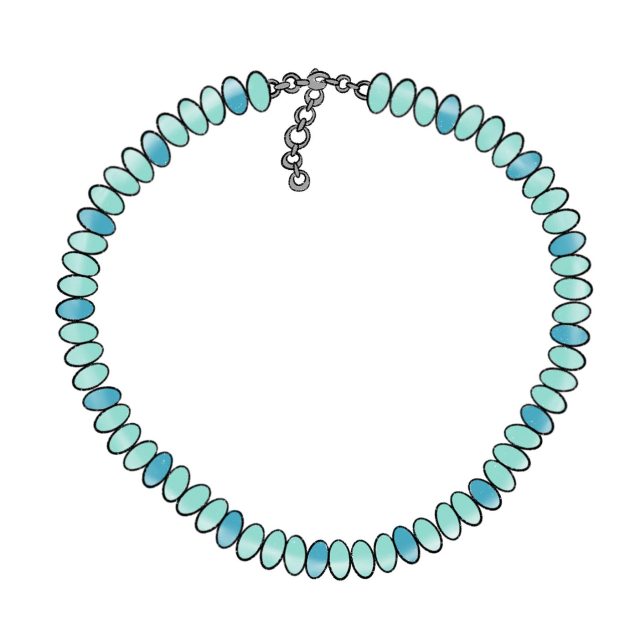
Initial necklaces are a way to wear your identity on your heart! They usually feature a chain and a letter pendant that can be either fixed or dangling (more common). The pendants are usually crafted from precious and semi-precious metals matching the chain, with alternative materials like leather, acrylic and ceramics and as secondary options. Monogram necklaces are a highly popular option for gifts for occasions like birthdays, anniversaries, bridal showers, bridesmaid proposals and more!
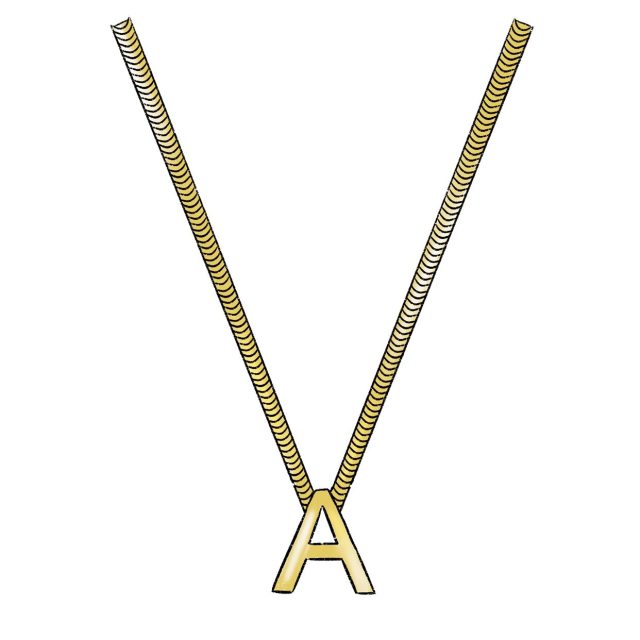
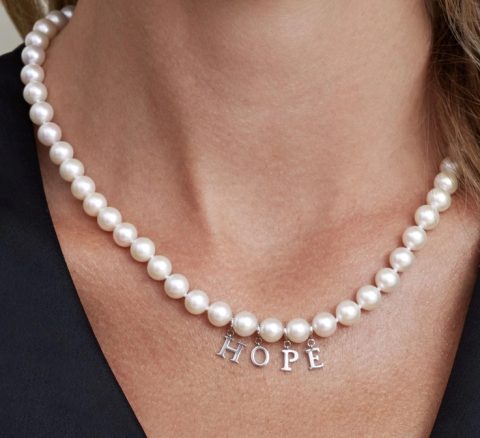
Pearlcore charm: Take your gift to the next level with Personalized Jewelry! Add your initial, name or affirmation word to your pearl necklace and pearl bracelet for a unique, signature look that works like a charm.
The sautoir necklace became widely popular in the 18th century when French aristocrats elevated these neckpieces to symbols of prestige and status. During this time, sautoir necklaces were often crafted from expensive materials such as gold, silver, and pearls. The term “sautoir” comes from French, where it translates to “jumper”, alluding to the graceful movement of this long necklace.
Typically, a sautoir necklace features woven or twisted ropes of pearls or gemstones with dangling tassels, paired with geometric diamond and gem-decked designs, often of Art Deco inspiration.
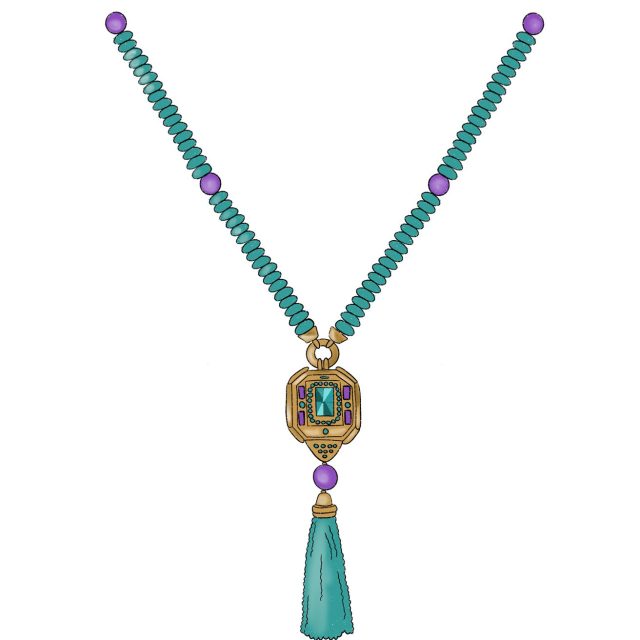
FUN FACT: In Ancient Crete, different necklaces were worn by different classes – peasants wore stones on flax thread, while the upper class wore beads of agate, pearl, carnelian, amethyst and crystal.
Torque necklaces also come with a complex history. Worn both as necklaces and as bracelets, torque designs were a sign of wealth and nobility, symbolizing courageous warriors. They are typically crafted from a variety of metals and they look similar to a neck ring. Traditionally, they consist of a bar or twisted metal that is shaped as a loop, with metallic knobs (or motifs like animal heads) at each end. Modern styles ditch the knobs and feature a more streamlined design.
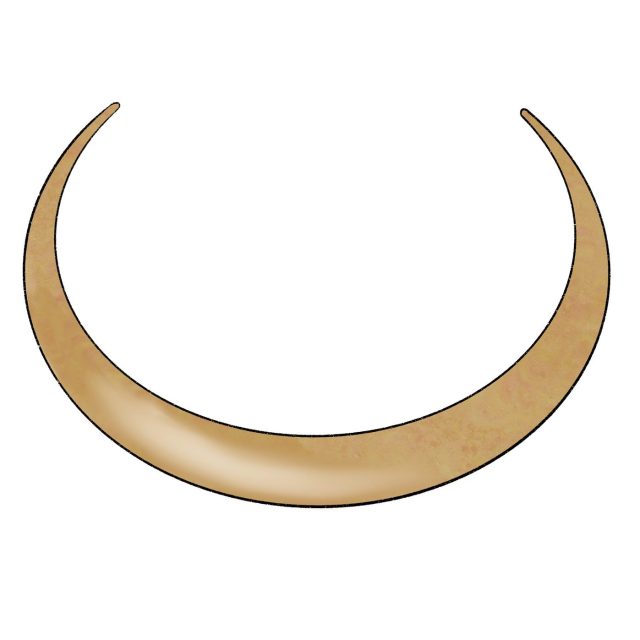
Lariat necklaces have an open-end design, with a chain (ending with a gemstone, metallic element or other ornamental pendant) falling low on the chest. These necklaces are perfect for layering, as they often come in dainty silhouettes and measure between 30 to 50 inches. The name of these types of necklaces comes from the Spanish ‘la reata’, which translates as “the rope.” They are generally crafted from metallic chains, beads, pearls and even leather.
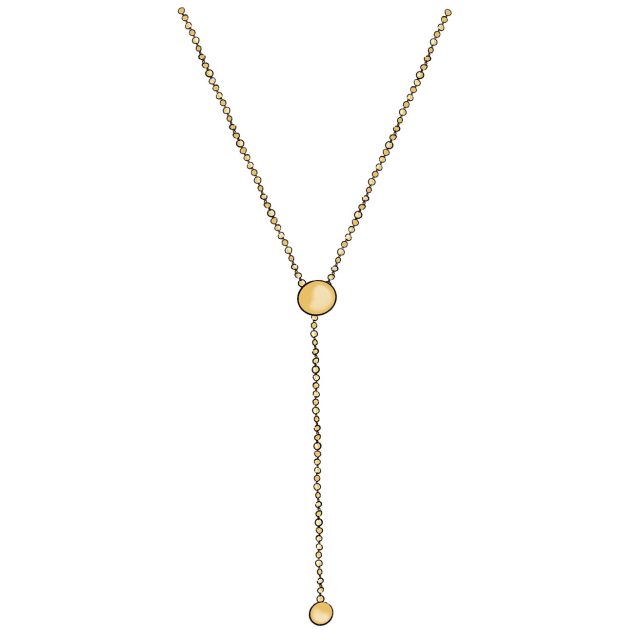
A graduated necklace consists of beads – or round gemstones, such as pearls – that vary in size. The larger beads are displayed in the center, and they get gradually smaller towards the back. Making a graduated pearl necklace is labor intensive, because the gems need to be matched in pairs by size. A tennis necklace can be classified as a graduated necklace. Check whether the size of the diamonds or cubic zirconia increases towards the center of the neckpiece!
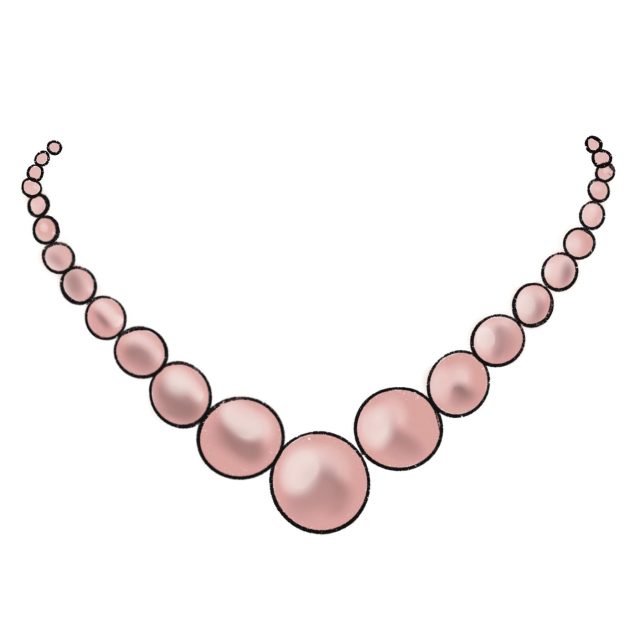
FUN FACT: Necklaces only achieved mainstream popularity in the late Middle Ages, thanks to the adoption of lower necklines.
Collar necklaces are a broad term that can include a variety of necklace types. The most common type of collar necklace on the market today is worn tight and high on the neck. This was made popular during the Edwardian Era, and is crafted from leather, velvet, metals or other materials. Typically, these collar necklaces feature a simple band, with or without a decorative element in the center. They are a popular accessory in goth and punk aesthetics.
Alternatively, collar necklaces can represent neckpieces similar to chokers, worn tightly at the base of the neck. A third category of collar necklaces can be considered more of an accessory than a necklace. These look strikingly similar to a shirt’s collar, and are usually decked with rhinestones and worn over a simple top to create a more polished look.
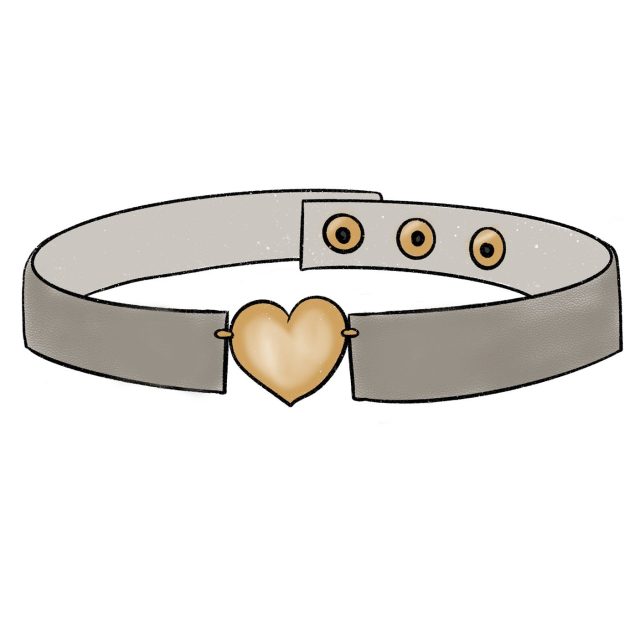
Pendant necklaces have a history spanning 25,000 years. Their origins can be traced to the ancient practice of adorning the neck with amulets or talismans. This tradition goes all the way back to the Stone Age, where pendants were anything from teeth, stones, bones and shells. Throughout history, pendants have been worn for reasons that go far beyond aesthetic purposes. Pendants have been valued for their benefits in healing, for spiritual reasons, as well as for protection. During the Victorian era, pendants became even more personal, depicting motifs that evoked sentiments – and often doubled as brooches.
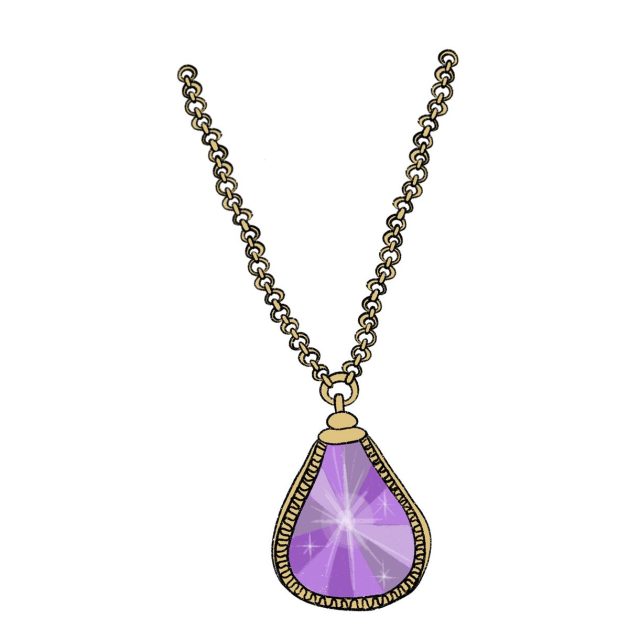
Also called ‘tin cup’ jewelry, station necklaces are pieces of jewelry that alternate beads (or pearls or other gemstones) with chain elements. The effect: creating ‘stations’ for the gems, displayed symmetrically. Many designs feature chains that are barely-there, as their dainty and slim silhouette makes them almost invisible, allowing for the gems to stand out. The name ‘tin cup’ was first introduced to the public in the 1996 romantic comedy ‘Tin Cup’, where this necklace design was worn by the leading actress.
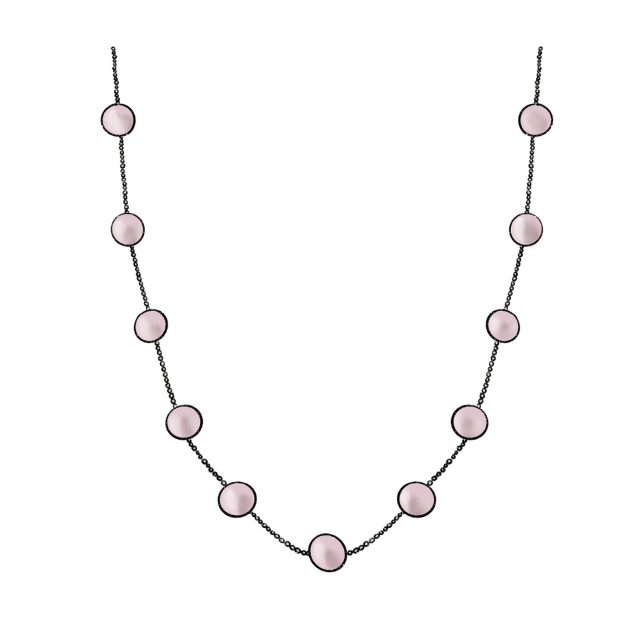
Multi-layer necklaces are, as the name suggests, types of necklaces that feature two or more layers. These layers can be identical (like in the case of classic pearl necklaces) or different. Multi-layer necklaces often come in slim chains, with or without gemstones and other pendants. Pieces featuring precious gemstones are valuable, due to the large number of gems used in multiple layers. They can vary in length – from choker styles to princess, matinee and even rope necklace lengths.
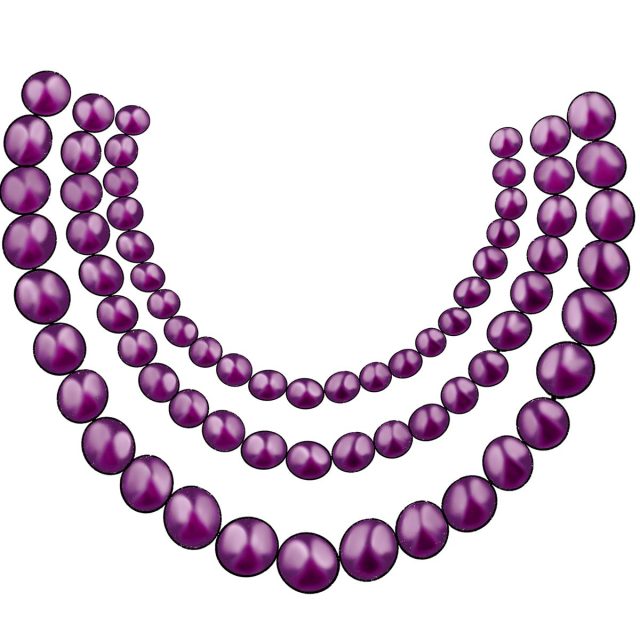
Charms have been used in jewelry since the Neolithic Period. Initially displayed on bracelets, charms were crafted from bone, shell and wood and displayed on leather bands. These necklaces find their origin around the year 3000 BC in Egypt, often depicting motifs that symbolized fertility, protection or prosperity. These days, the most popular charm options include floral motifs, hearts, locks, letters, astrological signs, and astronomical bodies.
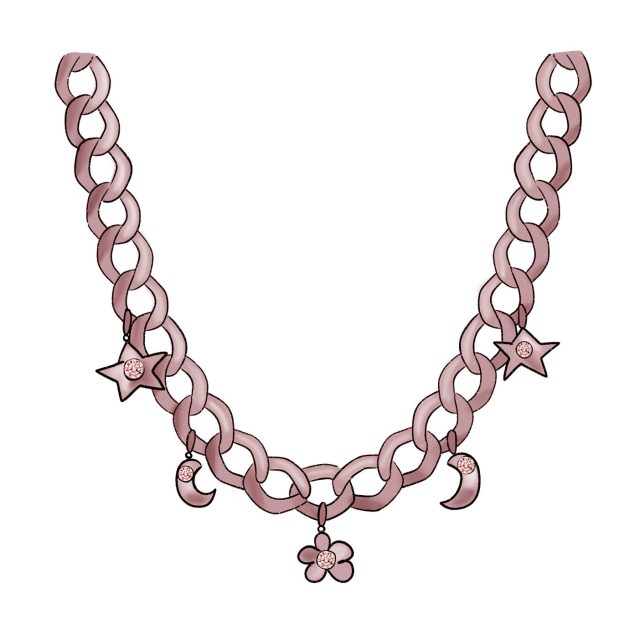
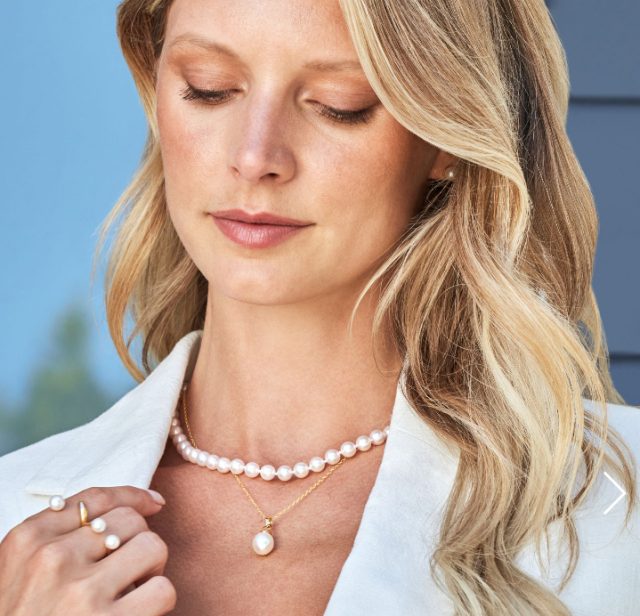
On the hunt for that perfectly styled coquette look? When in doubt, double – or triple the charm, the glow and the luster! Shop the full package – from the pearl earrings to the bracelets, rings and necklace, all paired up, cohesive and perfect together or up for mix and matching!
Bib necklaces are types of neckpieces that resemble a baby’s ‘bib’, as in they cover a large part of the chest. They can be made from various materials including metals, gemstones, beads, fabric, and even leather, with styles ranging from sleek and minimalist to highly ornate and decked in gemstones. There are various types of necklaces that fit in other categories but can also be described as bib necklaces, including fringe necklaces or collar necklaces. They are usually secured in the back with ribbon, string or chain and clasps.
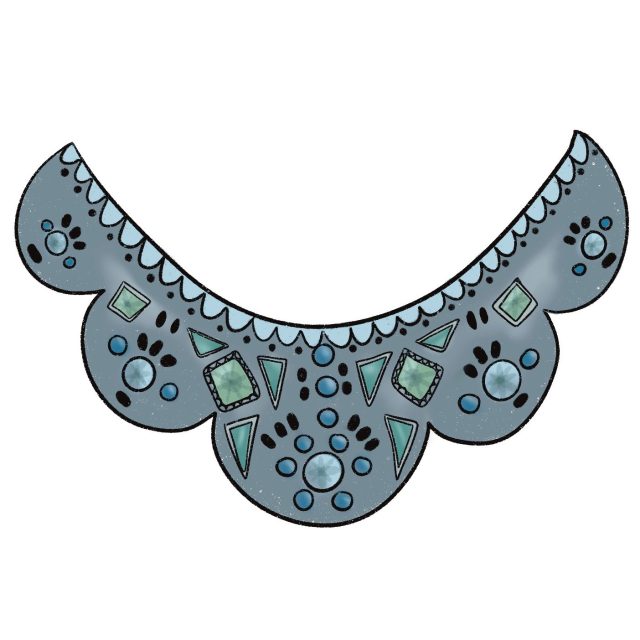
FUN FACT: A famous example of the bib necklace was created by Cartier for the Duchess of Windsor in 1947. The necklace came in an angular shape and was decked with amethysts, turquoise and diamonds in gold wire.
Solitaire necklaces are highly popular pieces of jewelry that feature a single gemstone as a pendant. The pendant can be both fixed on the chain (stationary) or dangling and free to move up and down the chain. The classic type of a solitaire necklace features a single diamond in a classic setting, such as basket or bezel settings. Alternative gemstones are highly popular, with the top affordable pick being cubic zirconia. The chain is usually slim, in chain types including cable, box, curb and figaro.
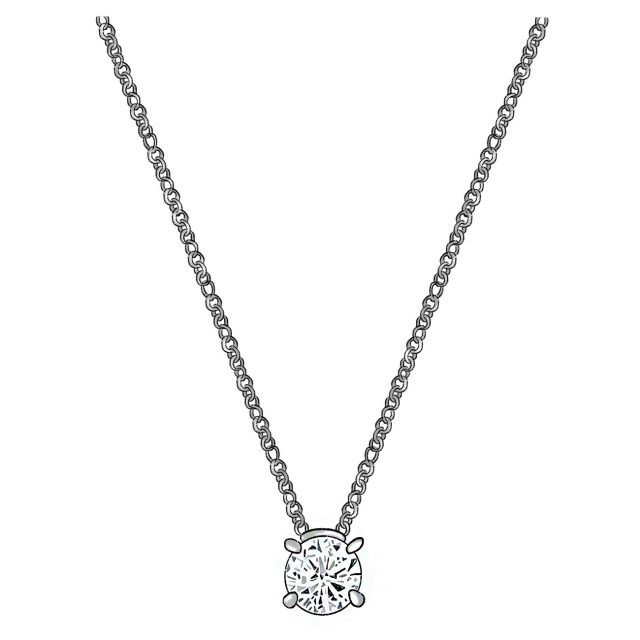
Tassels have been used in jewelry for generations – and necklaces are no exception. These types of necklaces are crafted from a mix of materials, including chain, glass beads, metallic components and thread, leather, or silk for the tassel part. Tassel necklaces are usually on the longer side, sit on the lower chest or towards the waist and have an elongated construction. They are considered bohemian pieces of jewelry, although more polished versions are available as well and usually crafted from chains and gemstones.
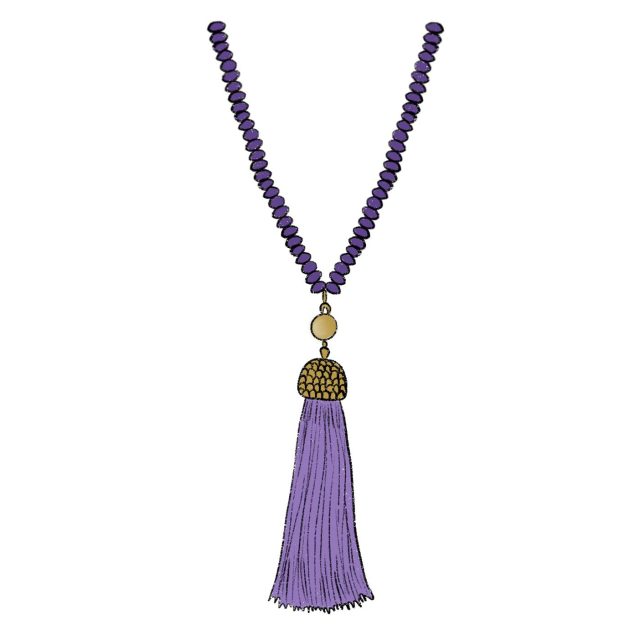
Leather has been used in the making of accessories since 5000 BC. These necklaces are crafted from a wide range of materials, including cowhide, sheepskin, and even exotic leathers like snake or alligator – as well as faux, imitation leather. They often present amulets or charms, typically in a boho style, including pendants made from stainless steel, baroque pearls, or filigree and geometrical elements. The appeal of leather necklaces is that they are often considered unisex and highly versatile when accessorizing casual to smart-casual outfits.
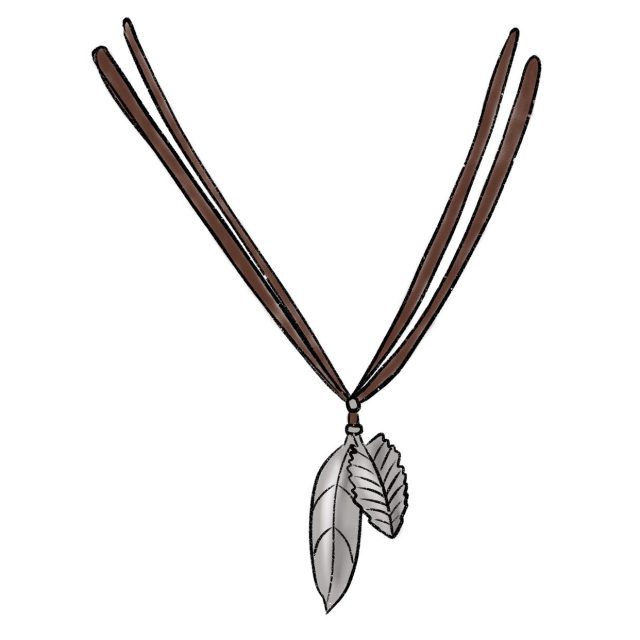
Bauble necklaces are part of the statement necklaces group, as they are highly voluminous. They are characterized by their bold designs that include large to extra-large beads, displayed linearly or in a cluster design. The large beads are made of non-precious materials, often acrylic, plastic, wood, ceramic or even fabric. Bauble necklaces are almost exclusively fashion jewelry pieces, meaning they are made from base metals (such as brass or copper) and non-precious gems / beads.
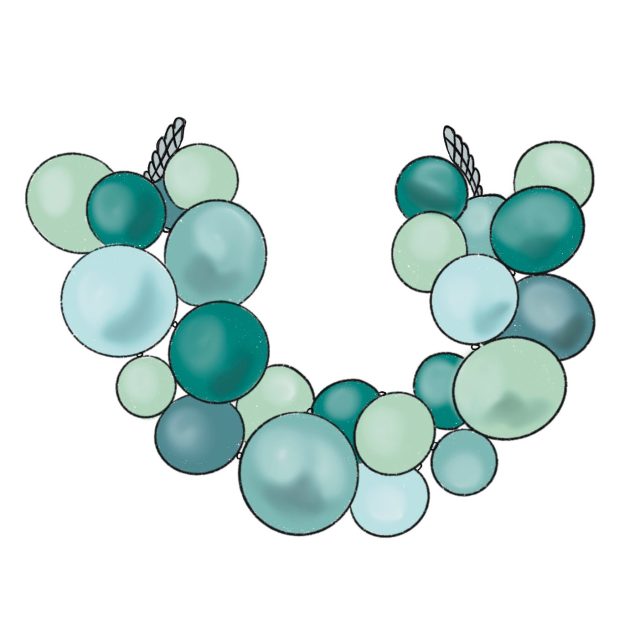
Rivière necklaces are types of jewelry that resemble choker necklaces or tennis necklaces. They feature a continuous line of gemstones that are either identical in size or larger in the center. Only one type of gemstone is used in a rivière necklace. The style became popular during the 18th century in Europe. Its name comes from French and literally means ‘river’, which, in jewelry terms, translates to a ‘river of gems’.
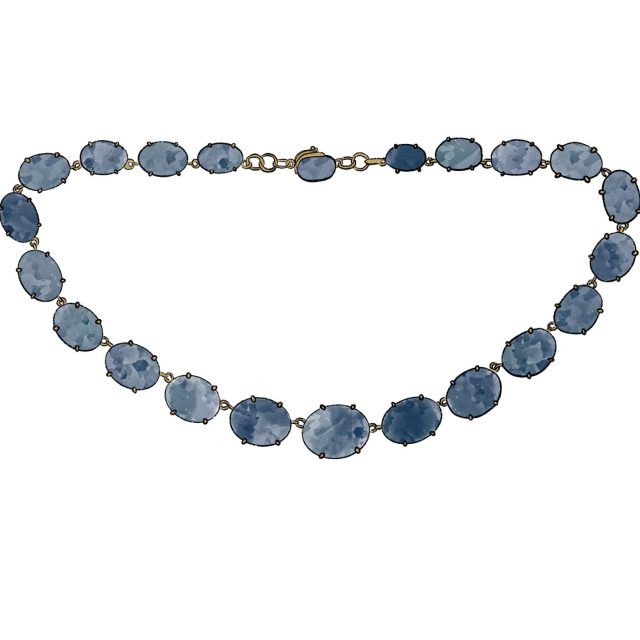
A choker necklace is generally worn at the base of the neck, but it’s worth noting that the name also represents a classic necklace length (measuring between 15 and 17 inches). The style gained popularity during the 1790s, at the time of the French Revolution, when the wives of those who lost their lives started wearing red ribbons as a way to commemorate their loved ones.
Chokers gained prominence in alternative subcultures like goth and punk during the late 20th century and became an emblem of rebellion and counterculture fashion. Chokers can be made from a wide range of materials, including leather, velvet, lace, metal, and even beads or gemstones. They come in various styles, from minimalist bands to ornate, multi-strand designs.
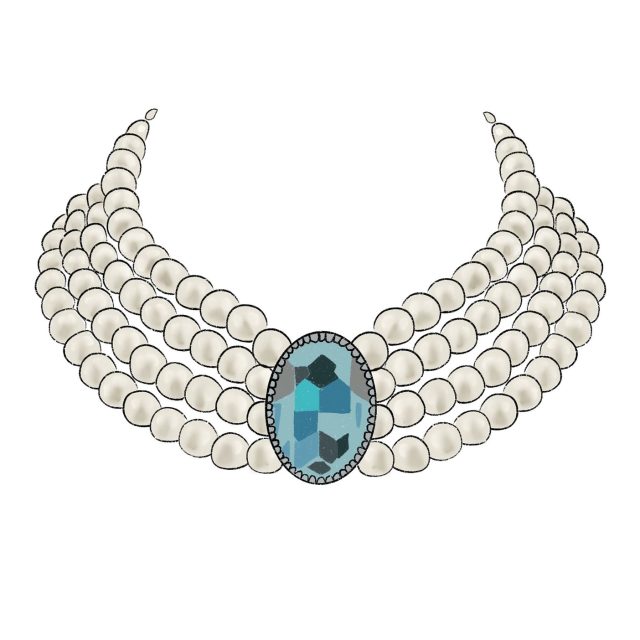
A torsade is a term that can refer to both necklaces and bracelets. Its main characteristic is the fact that it is created by intertwining multiple strands that can feature pearls, strands of chain or various gemstones. The length of a torsade necklace can vary—worn snugly, it becomes a choker, while a lengthier version is more similar to a sautoir. Pearls are the quintessential choice for a traditional torsade, but fashion necklaces can include all types of non-precious materials.
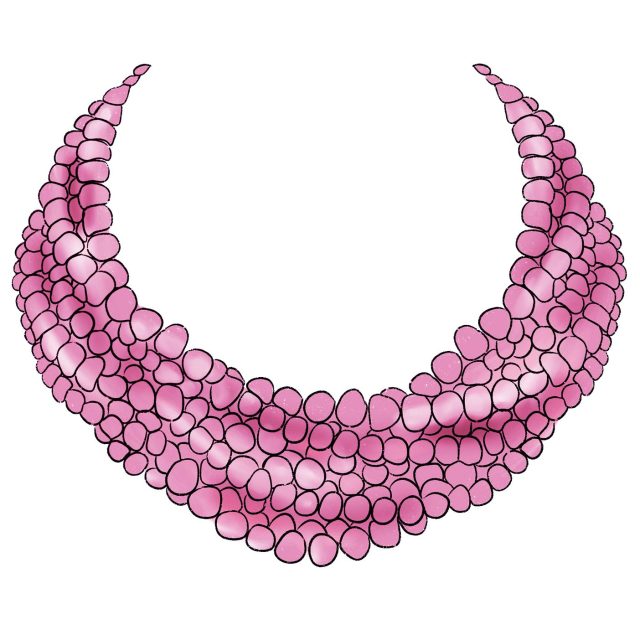
Locket necklaces date back from the 16th century, when small pendants were used for protection. One of the oldest locket jewelry pieces belonged to Queen Elizabeth I‘s, but it was set on a ring, not a neckpiece. The locket contained a portrait of herself and one of her mother, dating from around 1575. Lockets were commonly used in mourning jewelry during the Victorian era. They would contain a small portrait or a lock of hair from the deceased, serving as a way to keep their memory close. Lockets can carry deep symbolic meanings – they may represent love, remembrance, protection, or serve as a token of affection from one person to another.
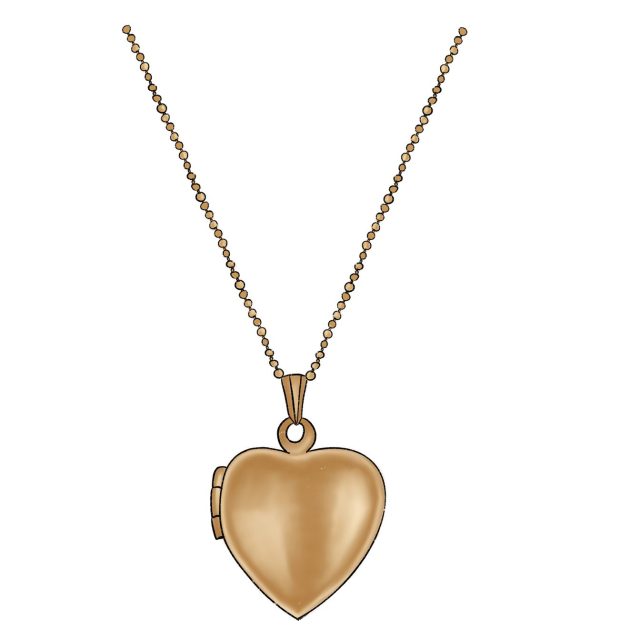
The negligee necklace is a jewelry piece that sits below the collarbone, with one side longer than the other (length asymmetry). This type of necklace was highly popular during the Edwardian era (1900-1915), as well as during the roaring 1920s – a period characterized by a fashion revival. The negligee necklace features gemstones at its terminations (usually attached to chain), or, alternatively, metallic elements or tassels.
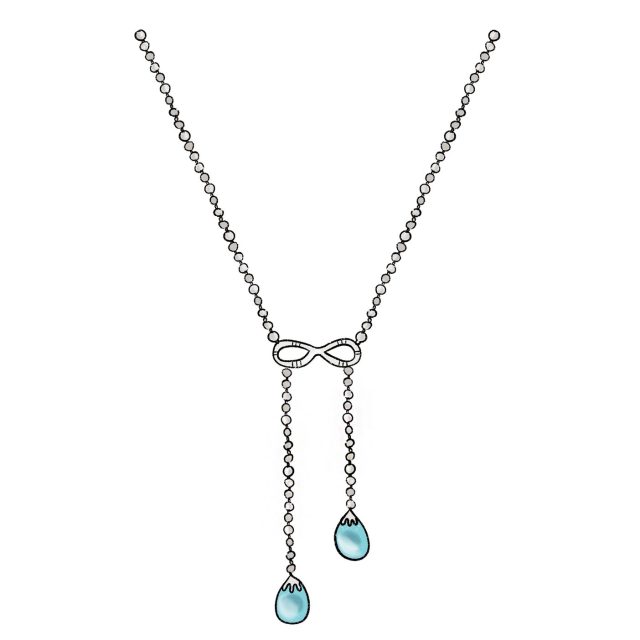
FUN FACT: The longest necklace in the world was created in Thailand in 2006. It extended over 1,000 meters, it was crafted from orchid flowers and worn by more than 1,000 women in a parade.
Plastron necklaces are statement jewelry pieces that are known for their impressive size. A plastron necklace covers the chest, often entirely, as it hangs down from the neck. They originate from ancient Egypt, where it was called ‘uskh’ and they feature a wide range of typically metallic elements connected together in layers, as well as dangling charms. The making of a plastron necklace involves metals (both precious and semi-precious), as well as stones, feathers, wood, shells and ceramics. Due to their materials and extra-large size, plastron necklaces are typically very heavy in weight.
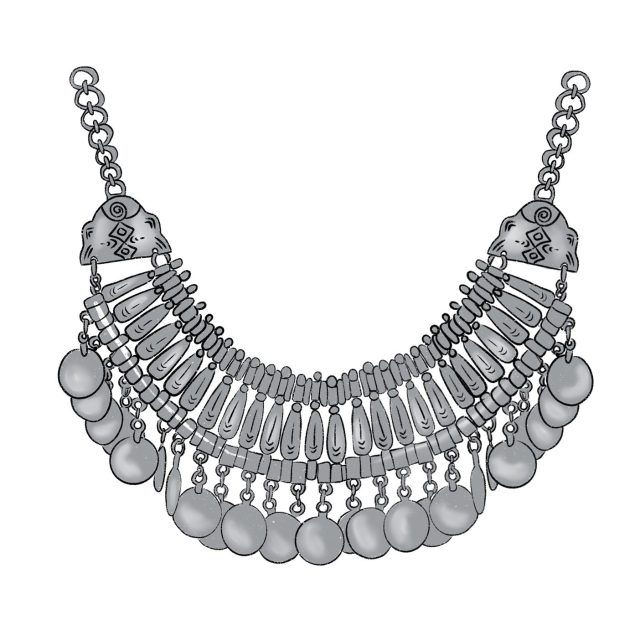
Birthstone pendants are types of necklaces that include the wearer’s birthstone. Each month of the year comes with one, two or even three birthstones (such as June, where the pearl, moonstone, and alexandrite are all official birthstones). They can take many designs, from the classic solitaire pendant style to crystals that are secured with wire and set on a semi-precious chain. Each birthstone is believed to bring a wide range of benefits to the wearer, from healing powers to improved energy, focus, luck and protection.
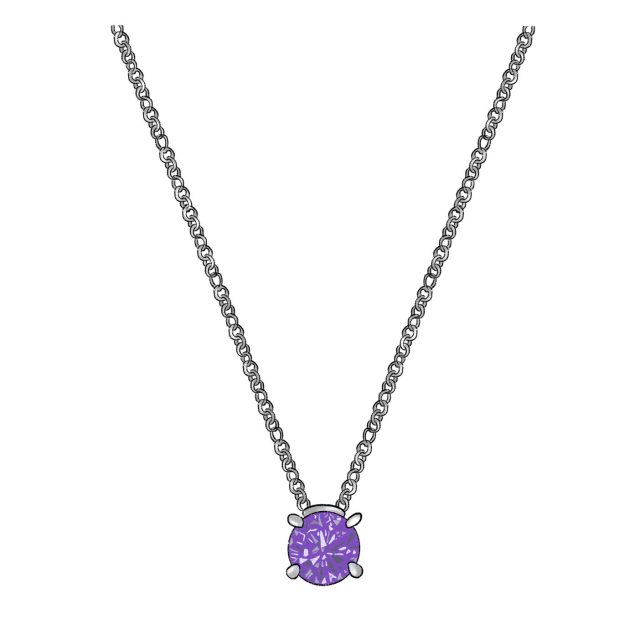
A fringe necklace features a series of pendant elements that hang from links or a cord encircling the neck. Its origins can be traced back to the Egyptian broad collar, also known as the “wesekh,” which first emerged around the 3rd millennium B.C., and was later popularized by the Greek and Minoan jewelers. In recent times, the fringe necklace achieved high popularity during the 1950s, and continues to be a staple on the market today. Contemporary styles feature ‘fringe’ made of thread, leather and chains.
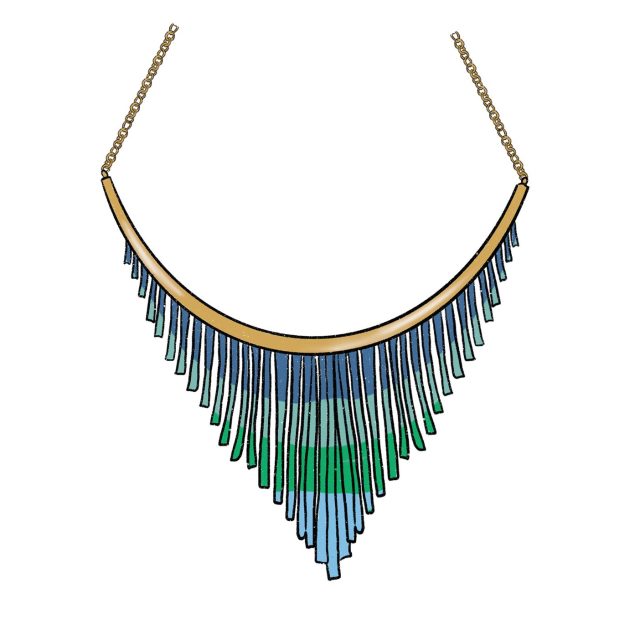
FUN FACT: Mouawad’s L’Incomparable necklace is the world’s most valuable necklace. The piece features a yellow diamond weighing over 407 carats, with an additional 102 additional diamonds. Its value: $55 million.
Thread necklaces originate from ancient civilizations, with their roots in Mesopotamia. Their main characteristic is the thread work around a core structure (usually crafted from sturdy metal, wire or beads). Thread necklaces are highly popular in India, especially in regions like Gujarat and Rajasthan, known for crafting highly ornate and vibrantly colored neckpieces. The most popular type of traditional thread jewelry is made from silk that is extracted from silkworms, but contemporary styles use cotton primarily.
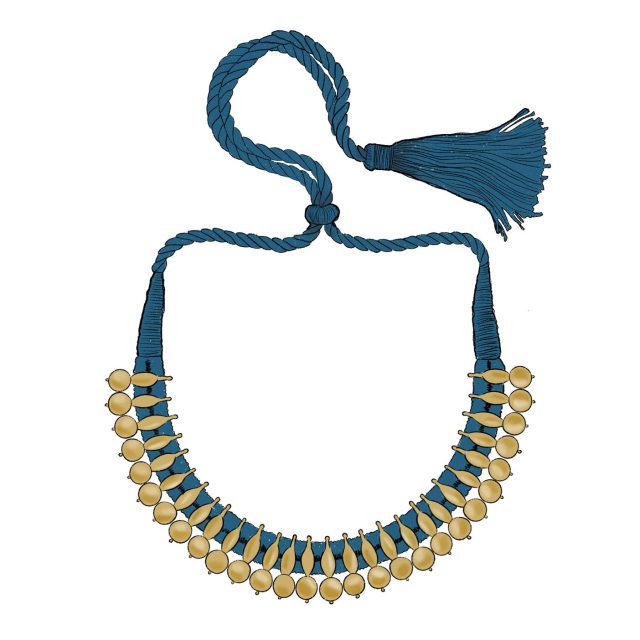
There is a wide range of necklace types on the market. Some of the most popular necklace styles include chain and charm necklaces, pearl necklaces, pendants, tennis necklaces and solitaire necklaces. Short and snug necklaces like chokers and collars are other in-demand necklace styles.
The most popular necklace length is the princess length, which regularly measures 18 inches. This length is highly versatile and suitable for both daytime and nighttime attire. The choker length, measuring 14 -16 inches, is the second most popular necklace length.
Trending styles for 2024 include sculptural necklaces that have a strong architectural design, baroque pearl necklaces with large, off-round gems, oversized link chain necklaces and statement pendants featuring unique charms.
A choker is a type of necklace that is designed to encircle the base of the neck closely, resting higher up than other necklace styles such as princess (18 inch), leaving no room for it to drape on the chest. Not to be confused with a collar necklace, which sits tightly higher up on the neck.
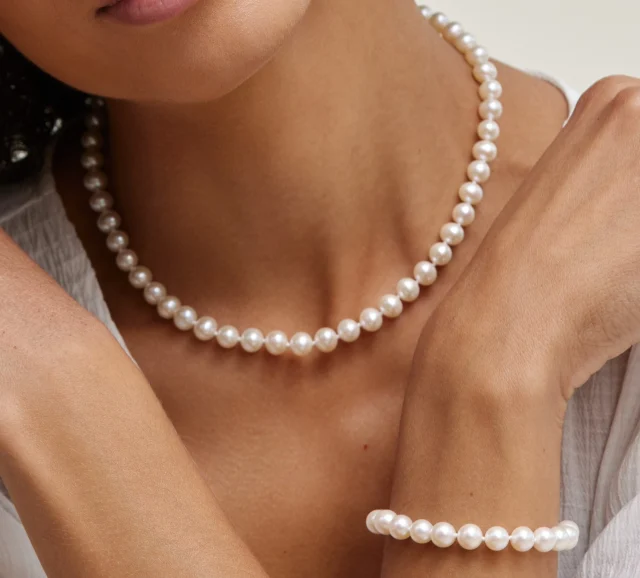
When it comes to necklaces, it doesn’t get more elegant than the perfect pearl necklace. White, black, golden or pink, Pearl Necklaces are all about timeless elegance – or modern appeal, your choice. Discover our collection of classic strands, station necklaces, mother of pearl neckpieces, pearl pendants and baroque pearl necklaces and complete your jewelry collection with your dream piece.
Necklaces have been around for more than 40,000 years. Originally crafted from bone, shells and stone, necklaces have certainly come a long way. The Egyptians loved them decked with gemstones and crafted from opulent gold, the Greeks loved intricate designs, while the Romans were the first to introduce mosaics in necklaces. Later on, the Victorian era brought the popular locket necklaces, while the Art Nouveau period was all about nature-inspired necklace designs.
These days, the market is bursting with a wide range of types of necklaces – from the elegant diamond necklace or the classic pearl strand to the intricate and ornate festoon to the joyful bauble, the complex bib and the minimalist torque, there’s a necklace out there for everyone. Question: which necklace style is your personal favorite? Let us know in the comments section!
For similar content, make sure to check our comprehensive guides on Types of Rings, Types of Bracelets and Types of Earrings!
Signup now and receive an email once I publish new content.

Content Writer and Editor at The Pearl Source
Carla Jonas is a content writer and editor at leading pearl retailer The Pearl Source. Passionate about everything jewelry, décor and fashion-related, Carla is ready to bring you the latest on what to wear, hot trends, style tips and more.
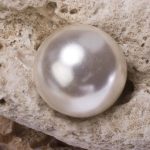 Birthstones 101 and a Complete Guide to the June Birthstone
Birthstones 101 and a Complete Guide to the June Birthstone
 27 Bridesmaid Earrings for Every Wedding, Budget and Style
27 Bridesmaid Earrings for Every Wedding, Budget and Style